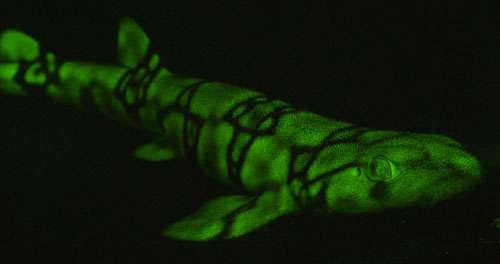With the help of blue light and special long-pass filters, scientists have uncovered more of the undersea world's secrets. A study published in January 2014 describes more than 180 species of marine fishes that glow in different colors and patterns, via a process known as biofluorescence. Biofluorescence is a natural process in which organisms absorb light at one intensity, or wavelength, and emit it at a different, usually lower, level--seen as a different color. Credit: J. Sparks, D. Gruber, and V. Pieribone
The species of goby fish, Sicyopterus stimpsoni, also known as the "inching climber," thrives in the waters off Hawaii, and the amazing physical feat it must perform to survive is no fish tale! To reach the safe haven of its freshwater spawning area, this goby must scale a waterfall, or at least the rock behind it, using suction cups on its body.
Typically no bigger than a few inches, it makes its way up the rock, hundreds of feet high. Comparatively speaking, a human being would have to climb Mount Everest three times in order to compete with the inching climber, according to St. Cloud State University biologist Heiko Schoenfuss.
With support from the National Science Foundation (NSF), he and other scientists at St. Cloud State and Clemson universities study these extraordinary fish to better understand how they've adapted and evolved in order to achieve such vertical feats. The challenge in this case is climbing waterfalls, but Schoenfuss says their findings can be extrapolated to other species, and whether it's human-induced selective pressure, pollution or warming waters, scientists can learn about how adaptation occurs over long and short periods of time.
Provided by National Science Foundation
























